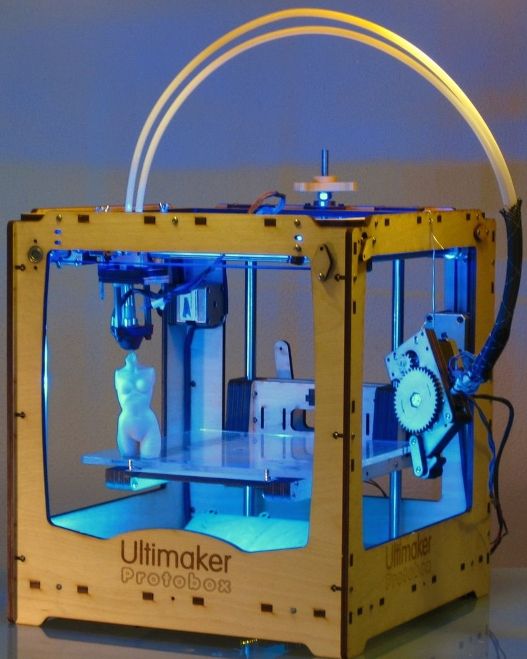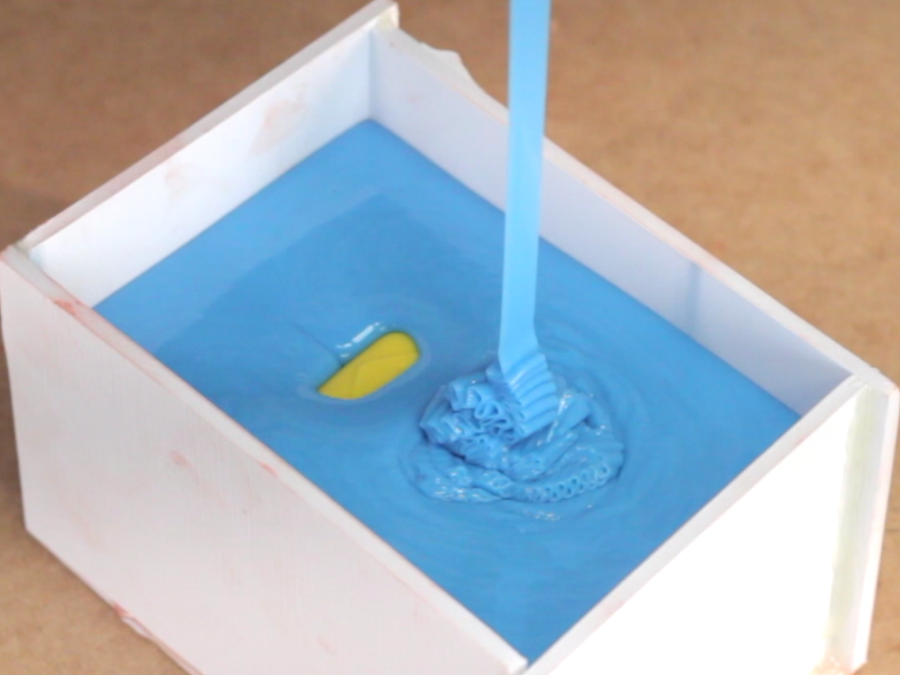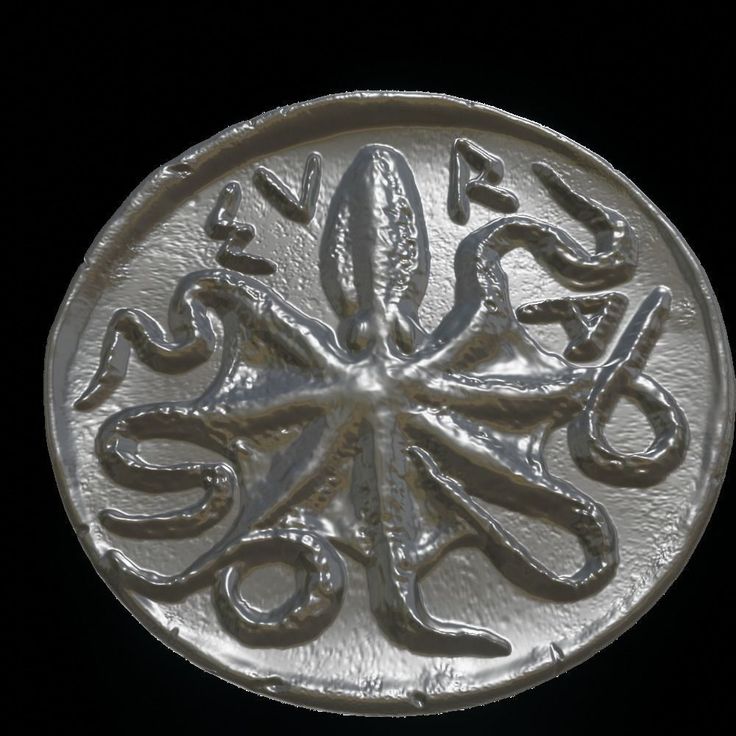All 3d printing stocks
Top 3D Printing Stocks
Table of Contents
Table of Contents
-
Best Value 3D Printing Stocks
-
Fastest Growing 3D Printing Stocks
-
3D Printing Stocks With the Best Performance
-
Trends in 3D Printing Sector
-
Advantages of 3D Printing Stocks
SSYS is top for value and performance and NNDM is top for growth
By
Noah Bolton
Full Bio
Noah has about a year of freelance writing experience. He's worked on his investing website dealing with topics such as the stock market and financial advice for beginners.
Learn about our editorial policies
Updated October 06, 2022
The 3D printing industry is made up of companies that provide products and services capable of manufacturing a range of products. 3D printing, also known as additive manufacturing, creates physical objects from digital designs. The printing process works by laying down thin layers of material in the form of liquid or powdered plastic, metal, or cement, and then fusing the layers together. Though still too slow for mass production, it is a revolutionary technology that has the potential to disrupt the manufacturing logistics and inventory management industries. The 3D printing industry is comprised of only a handful of companies, including players such as Proto Labs Inc., Faro Technologies Inc., and Desktop Metal Inc.
The industry is so young that it has no meaningful benchmark index. But the performance of these stocks can be compared to the broader market as represented by the Russell 1000 Index. These stocks have not performed well. Stratasys Ltd. (SSYS), the best performing 3D printing stock, has dramatically underperformed the Russell 1000, which has provided a total return of -12.5% over the past 12 months. This market performance number and all statistics in the tables below are as of Sept. 20, 2022.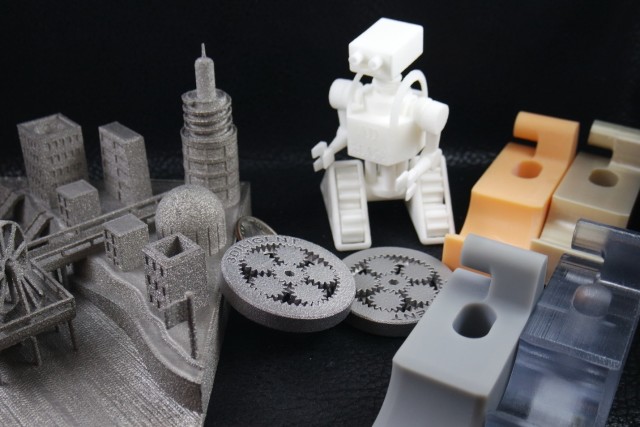
Here are the top three 3D printing stocks with the best value, fastest sales growth, and the best performance.
These are the 3D printing stocks with the lowest 12-month trailing price-to-sales (P/S) ratio. For companies in early stages of development or industries suffering from major shocks, this metric can be substituted as a rough measure of a business's value. A business with higher sales could eventually produce more profit when it achieves (or returns to) profitability. The price-to-sales ratio shows how much you're paying for the stock for each dollar of sales generated.
| Best Value 3D Printing Stocks | |||
|---|---|---|---|
| Price ($) | Market Cap ($B) | 12-Month Trailing P/S Ratio | |
| Stratasys Ltd. (SSYS) | 15.49 | 1.0 | 1.6 |
| 3D Systems Corp. (DDD) | 9.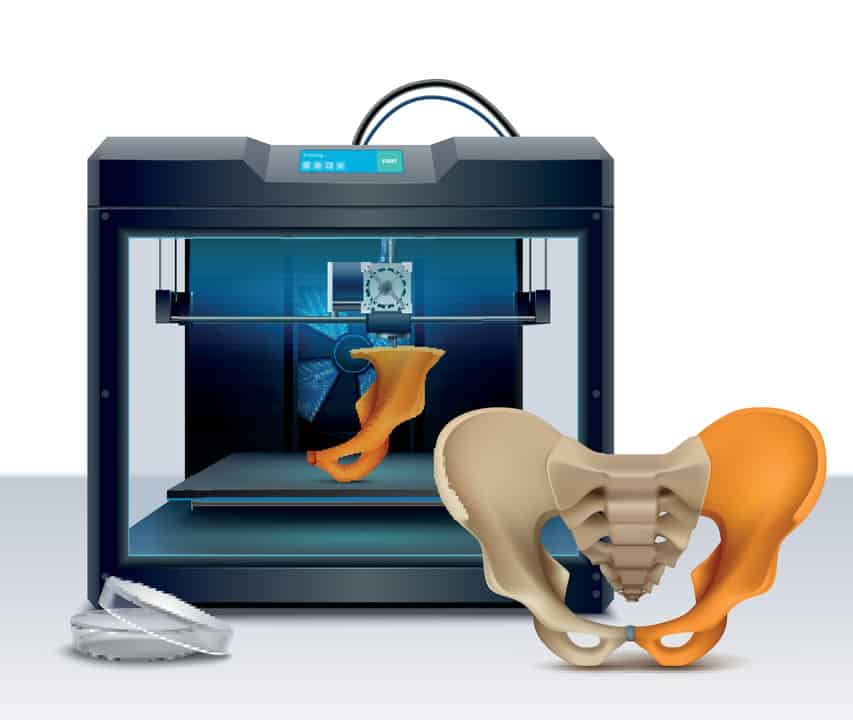 00 00 | 1.2 | 2.0 |
| Proto Labs Inc. (PRLB) | 37.49 | 1.0 | 2.1 |
Source: YCharts
- Stratasys Ltd.: Stratasys offers 3D printing solutions, such as 3D printers, polymer materials, a software ecosystem, and related parts. It serves a variety of industries, including aerospace, automotive, consumer products, and healthcare. On Sept. 13, Stratasys completed the merger of its MakerBot subsidiary with Ultimaker, which offers platforms used to make 3-D printers. Ultimaker is backed by NPM Capital. The merged company will keep the Ultimaker name and focus on providing solutions, hardware, software and materials to the industry. NPM Capital will have majority ownership of the new company at 53.5%, and Stratasys will own 46.5%.
- 3D Systems Corp.: 3D Systems provides 3D printing solutions. The company offers a range of hardware, software, and materials designed for additive manufacturing.
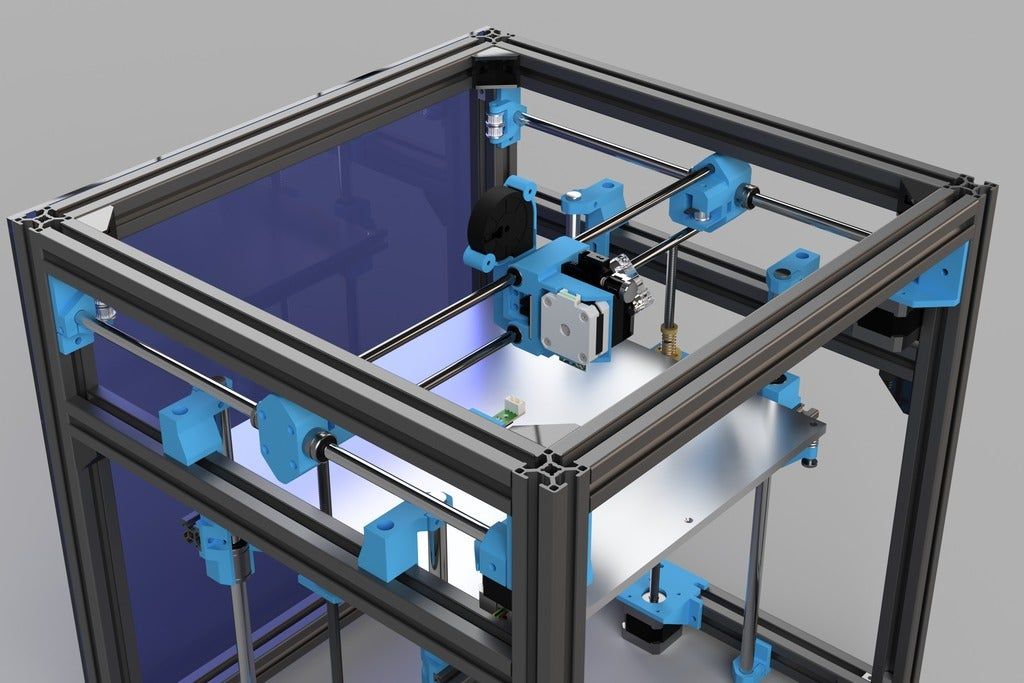 Its products and services are used in a variety of industries and sectors, including aerospace, automotive, semiconductor, healthcare, and more.
Its products and services are used in a variety of industries and sectors, including aerospace, automotive, semiconductor, healthcare, and more. - Proto Labs Inc.: Proto Labs is an e-commerce-based company that provides digital manufacturing services. It offers 3D printing, injection molding, CNC machining, and sheet metal fabrication. On Aug. 5, Proto Labs announced financial results for Q2 2022, the three-month period ending on June 30, 2022. Net income fell more than 80% to $2.6 million from the prior-year quarter while revenue rose 3.1%.
These are the 3D printing stocks with the highest YOY sales growth for the most recent quarter. Rising sales can help investors identify companies that are able to grow revenue organically or through other means and find growing companies that have not yet reached profitability. In addition, accounting factors that may not reflect the overall strength of the business can significantly influence earnings per share.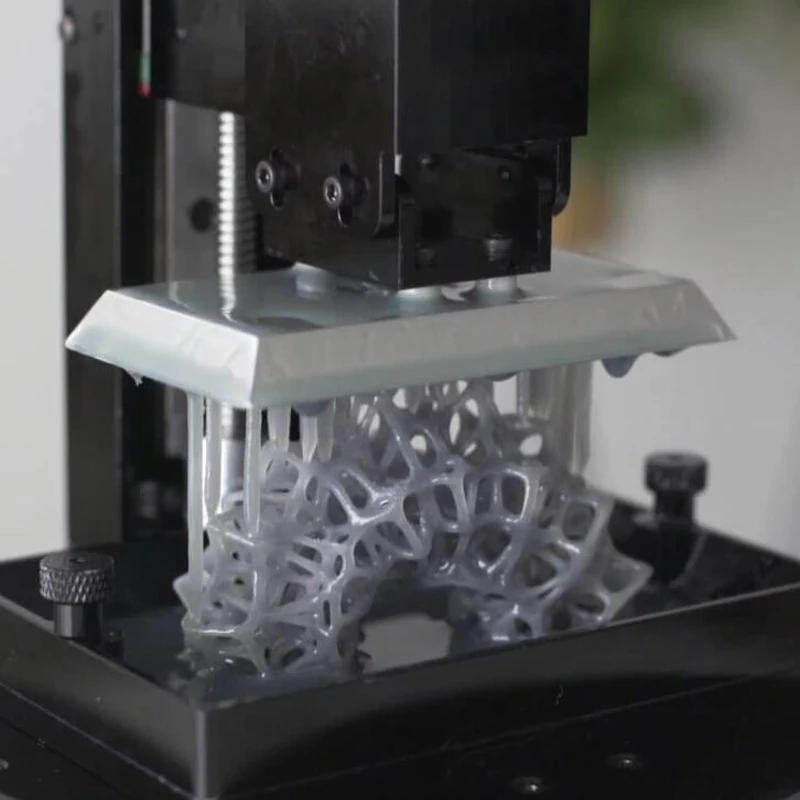 However, sales growth can also be potentially misleading about the strength of a business, because growing sales on money-losing businesses can be harmful if the company has no plan to reach profitability.
However, sales growth can also be potentially misleading about the strength of a business, because growing sales on money-losing businesses can be harmful if the company has no plan to reach profitability.
| Fastest Growing 3D Printing Stocks | |||
|---|---|---|---|
| Price ($) | Market Cap ($B) | Revenue Growth (%) | |
| Nano Dimension Ltd. (NNDM) | 2.45 | 0.6 | 1,270 |
| Desktop Metal Inc. (DM) | 3.07 | 1.0 | 203.9 |
| Stratasys Ltd. (SSYS) | 15.49 | 1.0 | 13.3 |
Source: YCharts
- Nano Dimension Ltd.: Nano Dimension is an Israel-based 3D printing company focused on developing equipment and software for 3D-printed electronics. It develops printers for multilayer printed circuit boards and nanotechnology-based inks.
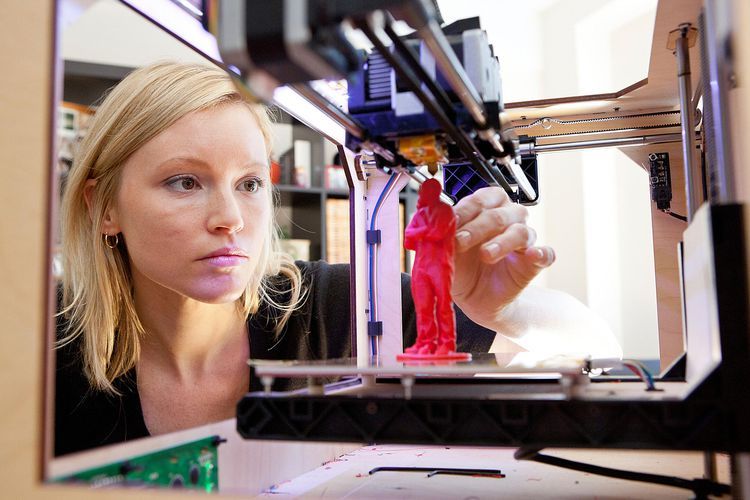 The company serves a range of industries, including consumer electronics, healthcare, aerospace, and automotive. On Sept. 1, Nano Dimension released Q2 2022 results. The company's net loss widened sharply to $40.0 million from a loss of $13.6 million in the same quarter a year earlier even as revenue soared more than 13-fold. The larger second-quarter loss was fueled partly by $10.9 million in non-cash adjustments for depreciation and amortization expenses, and share-based payments.
The company serves a range of industries, including consumer electronics, healthcare, aerospace, and automotive. On Sept. 1, Nano Dimension released Q2 2022 results. The company's net loss widened sharply to $40.0 million from a loss of $13.6 million in the same quarter a year earlier even as revenue soared more than 13-fold. The larger second-quarter loss was fueled partly by $10.9 million in non-cash adjustments for depreciation and amortization expenses, and share-based payments. - Desktop Metal Inc.: Desktop Metal manufactures 3D printers and related equipment used to build complex parts from metal. It also offers 3D printing software. The company serves a range of industries, including automotive, consumer products, education, and heavy industry. On Aug. 08, the company reported Q2 2022 results. Desktop Metals' net loss increase nearly seven-fold to $297.3 million compared to the same quarter a year earlier even as revenue tripled.
- Stratasys Ltd.
 : See above for company description.
: See above for company description.
These are the 3D printing stocks that had the smallest declines in total return over the past 12 months out of the companies we looked at.
| 3D Printing Stocks With the Best Performance | |||
|---|---|---|---|
| Price ($) | Market Cap ($B) | 12-Month Trailing Total Return (%) | |
| Stratasys Ltd. (SSYS) | 15.49 | 1.0 | -34.5 |
| Proto Labs Inc. (PRLB) | 37.49 | 1.0 | -50.6 |
| Materialise NV (MTLS) | 10.95 | 0.6 | -53.9 |
| Russell 1000 | N/A | N/A | -12.5 |
Source: YCharts
- Stratasys Ltd.: See above for company description.
- Proto Labs Inc.: See above for company description.

- Materialise NV: Materialise is a Belgium-based provider of additive manufacturing software and 3D printing services. It serves a range of industries, including healthcare, aerospace, and automotive. On Sept. 7, Materialise completed its acquisition of Identity3D, which makes products that encrypt, distribute, and track digital parts as they move through supply-chains. The value of the deal was not specified in the announcement.
Trends in 3D Printing Sector
The 3D printing industry is a young one, and companies are still jockeying for market share or facing consolidation risks. Nonetheless, 3D printing has significant potential to impact a host of other industries. 3D printing businesses may be crucial in helping other companies maximize production efficiencies in an effort to reduce environmental impact out of a concern for climate change, for example. 3D printing can be used to create personalized products in the healthcare or therapeutics spaces.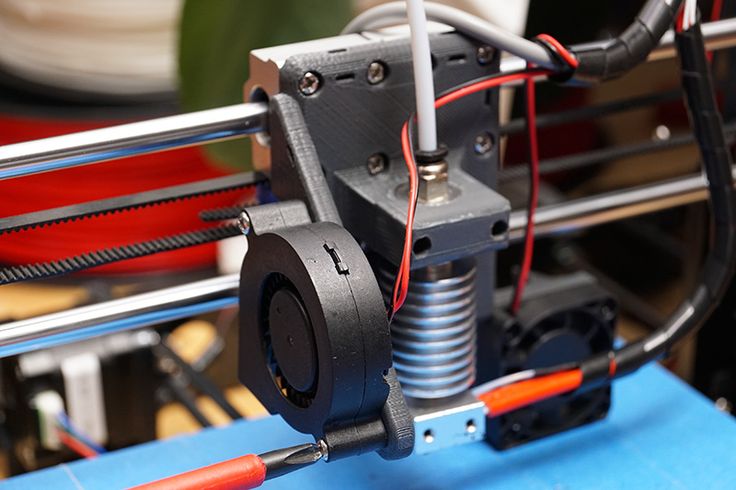 This technology can also be used to facilitate a faster turnaround for the creation of new models of existing products in industries such as the automotive space.
This technology can also be used to facilitate a faster turnaround for the creation of new models of existing products in industries such as the automotive space.
Advantages of 3D Printing Stocks
3D printing technology has the benefit of being a relatively new technology which has potential applications across a range of fields. This is one reason why the 3D printing market is expected to roughly triple in size to $44.5 billion by 2026. This versatility provides a significant benefit to 3D printing stocks within an investment portfolio. Another advantage of 3D printing technology is that it may have the potential to alleviate some of the impact of supply chain constraints. Given the ongoing supply chain crisis which has impacted a host of industries, there is an opportunity for 3D printing companies to provide a critical service.
The comments, opinions, and analyses expressed herein are for informational purposes only and should not be considered individual investment advice or recommendations to invest in any security or to adopt any investment strategy. Though we believe the information provided herein is reliable, we do not warrant its accuracy or completeness. The views and strategies described in our content may not be suitable for all investors. Because market and economic conditions are subject to rapid change, all comments, opinions, and analyses contained within our content are rendered as of the date of the posting and may change without notice. The material is not intended as a complete analysis of every material fact regarding any country, region, market, industry, investment, or strategy.
Though we believe the information provided herein is reliable, we do not warrant its accuracy or completeness. The views and strategies described in our content may not be suitable for all investors. Because market and economic conditions are subject to rapid change, all comments, opinions, and analyses contained within our content are rendered as of the date of the posting and may change without notice. The material is not intended as a complete analysis of every material fact regarding any country, region, market, industry, investment, or strategy.
Article Sources
Investopedia requires writers to use primary sources to support their work. These include white papers, government data, original reporting, and interviews with industry experts. We also reference original research from other reputable publishers where appropriate. You can learn more about the standards we follow in producing accurate, unbiased content in our editorial policy.
YCharts. "Financial Data.
 "
"Stratasys Ltd. "Stratasys Completes Merger of MakerBot with Ultimaker."
Proto Labs Inc. "Proto Labs Q2 2022 Earnings Release."
Nano Dimension Ltd. "Earnings Press Release for Q2 2022."
Desktop Metals Inc. " Desktop Metals Second Quarter 2022 Earnings."
Materialise NV. "Materialise Acquires Indenity3D."
3D Natives. "What Were the 3D Printing Trends in 2021?"
Fast Company. "Four 3D printing trends to look for in 2022."
Hubs. "3D printing trend report 2022."
Five 3D Printing Stocks to Consider in 2023
Image source: Getty Images.
Back in the early 2010s, stocks were booming for 3D printing -- also known as additive manufacturing, a computer-controlled process in which three-dimensional objects are made. But the boom was followed by a bust as many pure-play 3D printing companies didn't immediately deliver on lofty expectations.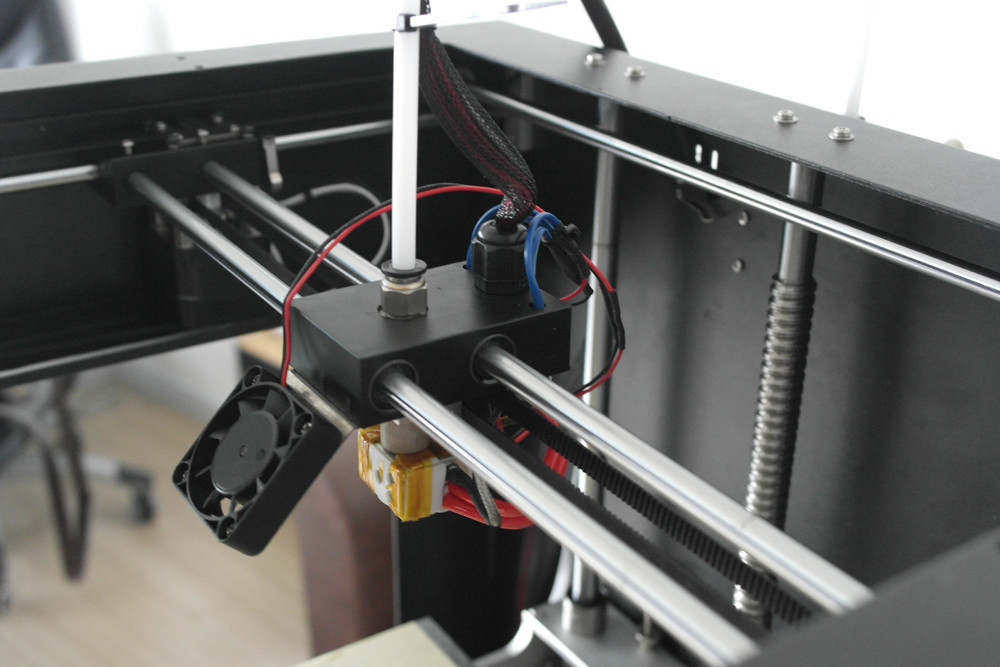
Rumors of the manufacturing technology's demise are clearly premature. These days, 3D printing is a high-growth niche that is steadily reshaping the manufacturing and industrial sectors. Some estimates point to a doubling in annual revenue from additive manufacturing between 2022 and 2026. Even growth investor Cathie Wood has launched a fund focused on manufacturing tech, The 3D Printing ETF (NYSEMKT:PRNT), via her company ARK Invest.
Here's what you need to know about 3D printing and additive manufacturing stocks for 2023:
Investing in 3D printing stocks in 2023
The manufacturing of products in all corners of the economy is being revolutionized by 3D printing, from healthcare equipment to metal fabrication to housing construction. It's invading so many sectors that tech giants such as Microsoft (NASDAQ:MSFT), Autodesk (NASDAQ:ADSK), and HP (NYSE:HPQ) have launched products aimed at 3D printing and additive manufacturing. Other engineering and software outfits such as Dassault Systemes (OTC:DASTY), ANSYS (NASDAQ:ANSS), and Trimble (NASDAQ:TRMB) have also gotten involved in 3D printing technology.
Other engineering and software outfits such as Dassault Systemes (OTC:DASTY), ANSYS (NASDAQ:ANSS), and Trimble (NASDAQ:TRMB) have also gotten involved in 3D printing technology.
Here are five key players to consider for 2023 that are a more focused bet on 3D printing:
| Company | Market Cap | Description |
|---|---|---|
| Desktop Metal (NYSE:DM) | $584.3 million | Recent IPO that focuses on metal fabrication technology. |
| Stratasys (NASDAQ:SSYS) | $924.3 million | One of the original 3D printing pioneers, with a wide array of printers and supporting design software. |
| Xometry (NASDAQ:XMTR) | $1.3 billion | A manufacturing marketplace, including access to on-demand 3D printing services. |
| 3D Systems (NYSE:DDD) | $1.2 billion | Another original 3D printing pioneer and the largest pure-play stock on 3D printing technology. |
| PTC (NASDAQ:PTC) | $15.4 billion | A manufacturing technology provider with a suite of software and related services for industrial businesses. |
1. Desktop Metal
This company is a recent entry into the 3D printing space after going public via a SPAC at the end of 2020. The stock has been a terrible market underperformer since then, losing three-quarters of its value as of spring 2022. However, Desktop Metal could still be a promising investment for the long term.
As its name implies, Desktop Metal develops 3D printing hardware and accompanying design software for metal and carbon fiber parts. The company's smaller systems can handle prototyping and one-off parts, and larger printers are production grade-designed for manufacturing facilities.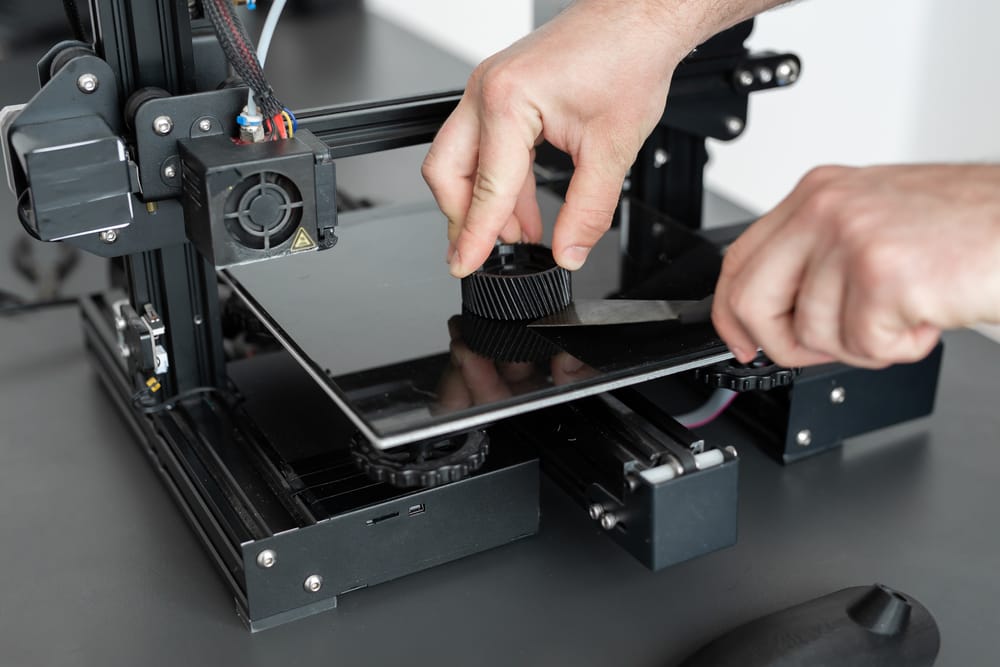 Desktop Metal serves companies operating in automotive, consumer goods, and heavy industrial equipment businesses.
Desktop Metal serves companies operating in automotive, consumer goods, and heavy industrial equipment businesses.
Despite a tenuous start as a public company, Desktop Metal was actually increasing revenue at a torrid triple-digit pace in 2021. Gross profit margins are thin, and the company generated a steep net loss, but that should improve over time as the business scales its operation. Desktop Metal also has several hundred million dollars in cash and investments to fund its expansion. It used some of these funds to acquire additive manufacturing peer ExOne at the end of 2021.
2. Stratasys
Stratasys was part of the early 2010s 3D printing stock boom and bust, but its business has endured. Sales took a dip early in the COVID-19 pandemic but are rebounding as the Israel-based company picks up new manufacturing contracts.
Stratasys serves a diverse set of customers, including aerospace and automotive parts manufacturers, medical and dental companies, and makers of basic consumer products.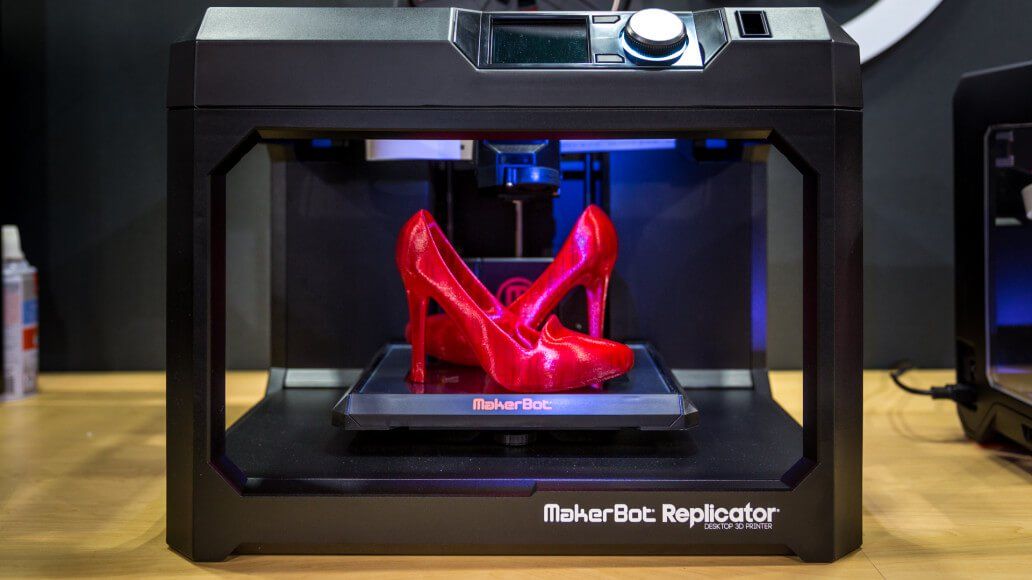 In addition to a wide array of 3D printer models, Stratasys develops software to help users accelerate the time between design and final printing.
In addition to a wide array of 3D printer models, Stratasys develops software to help users accelerate the time between design and final printing.
It isn't the highest-growth name on this list, but Stratasys is profitable (on a free cash flow basis) and has more than $500 million in cash and investments on its balance sheet, as well as no debt. Management thinks its payoff from years of research and development into additive manufacturing will accelerate in 2022.
3. Xometry
This is another newcomer to public markets. Xometry completed its initial public offering (IPO) over the summer of 2021, raising almost $350 million in cash in the process. As is often the case with new IPOs, the stock has underperformed since then. It has lost over half of its value from the time it started trading on public markets, but the business itself is rapidly growing.
Xometry is a marketplace for on-demand manufacturing of prototyping and mass production. It has a network of more than 5,000 suppliers that companies can call on to meet their fabrication needs. Among the suppliers on the Xometry platform are 3D printing companies, injection molding, and automated machining. The company reported having more than 28,000 active buyers utilizing its platform at the end of 2021.
It has a network of more than 5,000 suppliers that companies can call on to meet their fabrication needs. Among the suppliers on the Xometry platform are 3D printing companies, injection molding, and automated machining. The company reported having more than 28,000 active buyers utilizing its platform at the end of 2021.
Although it isn't profitable yet, Xometry's unique approach to the 3D printing and additive manufacturing industry is growing fast. Like other names on this list, it has a sizable war chest of cash and short-term investments that it can spend on research and marketing as it tries to attract more suppliers and buyers to its marketplace.
4. 3D Systems
3D Systems was another early player in the 3D printing industry, and while it suffered through the boom-and-bust period of the early 2010s, its business has held steady for much of the past decade. After a brief dip during the early days of the pandemic, 3D Systems is back in growth mode.
The company develops printers and design software for all sorts of materials and industries (medical device makers, dental labs, semiconductor designers, aerospace, and automotive manufacturers). It claims leadership among independent 3D printing companies (as measured by sales). As the 3D printing industry expands in the coming years, 3D Systems thinks it will be able to attract lots of new business with its extensive experience and global reach.
As an established tech outfit in the manufacturing sector, 3D Systems offers investors the prospect of more stable growth, along with profitability. It also has a large net cash position from which it can consolidate its lead in 3D printers and software technology.
5. PTC
By far the largest company on this list, PTC is a longtime technology partner of manufacturing and industrial enterprises. Fast approaching $2 billion in annualized sales and highly profitable, PTC has all the tools needed to digitally transform industrial businesses.
Besides 3D printing computer-aided design software (ANSYS is a peer and software partner that also operates in this space), PTC specializes in augmented reality, industrial IoT (Internet of Things), and product life-cycle management software. Most of its revenue is subscription-based (including its Creo software that enables 3D printing), making for a stable and steadily growing business model that generates ample cash flow. PTC puts spare cash to work developing new products for its partners and makes bolt-on acquisitions of other software companies that enhance its overall portfolio.
As a larger company, PTC won't be the fastest-growing stock in the additive manufacturing and 3D printing space. However, the company has established itself as a leader in industrial technology and should be a primary beneficiary as the production of manufactured goods gets more efficient.
The future of 3D printing
Manufacturing technology is making inroads throughout the global economy by reducing the cost of production and localizing and speeding up the time it takes to deliver customer orders.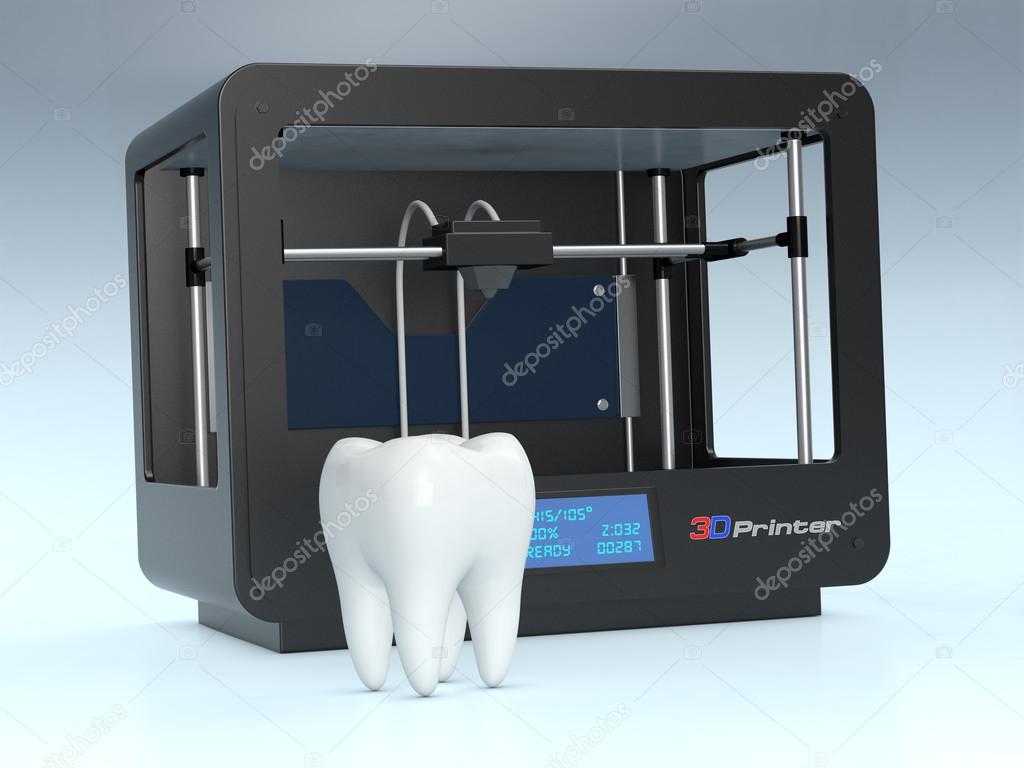 This is far from mere hype. Nevertheless, as is the case with all technology investments, progress won't go straight up. Expect twists and turns in these stocks as they develop new methods to design and make products.
This is far from mere hype. Nevertheless, as is the case with all technology investments, progress won't go straight up. Expect twists and turns in these stocks as they develop new methods to design and make products.
If you decide to invest, do so in a measured way. Maintain a diversified portfolio, be wary of stocks benefiting from investor over-optimism, and always leave spare cash to invest more when there are inevitable dips. Given enough time -- years and decades -- investing in 3D printing could eventually provide a big payoff.
Related communication stocks topics
Investing in 5G Stocks
As the 5G technology rollout continues, these companies look like winners.
Investing in Top Telecommunications Stocks
Our world is increasingly interconnected, and these companies make it happen.
Investing in Communication Stocks
Communications has a broad definition. These companies are the leaders in the space.
Investing in Top Consumer Discretionary Stocks
When people have a little extra cash, they indulge in offerings from these companies.
Nicholas Rossolillo has positions in Autodesk. The Motley Fool has positions in and recommends Autodesk, HP, and Microsoft. The Motley Fool recommends 3d Systems, Ansys, Dassault Systèmes Se, PTC, and Trimble. The Motley Fool has a disclosure policy.
Top 10 3D printing companies listed on the stock exchange
So, we present to your attention the ranking of 3D printing companies in terms of annual turnover.
Stratasys: $750 million
Industry leader Stratasys grew 54% over the past year with sales exceeding $750 million. This is partly driven by demand for the new Object500 Connex3 model, as well as the traditionally popular PolyJet and industrial FDM 3D printers. Another growth driver was the acquisition of other companies such as Solid Concepts and Harvest Technologies (now part of Stratasys Direct Manufacturing). At the same time, the American-Israeli company (which includes, among other things, MakerBot Industries and SolidScape) recorded a net loss of $119 in its financial statements.million. This figure is more than four times higher than last year, which is also due to active acquisitions and investments. The forecast for 2015 is positive, it is expected that the revenue will be $940 million. If Stratasys manages to beat expectations by 6%, it could become the first pure 3D printing company to reach $1 billion in revenue.
At the same time, the American-Israeli company (which includes, among other things, MakerBot Industries and SolidScape) recorded a net loss of $119 in its financial statements.million. This figure is more than four times higher than last year, which is also due to active acquisitions and investments. The forecast for 2015 is positive, it is expected that the revenue will be $940 million. If Stratasys manages to beat expectations by 6%, it could become the first pure 3D printing company to reach $1 billion in revenue.
3D Systems: $650 million
Although 3D Systems' revenue rose 27% to a record high, the company still lost the top spot to Stratasys last year. The head of the company, Avi Reichental, said he was not entirely satisfied with how the company realized the potential of its technology portfolio. 3D Systems has some of the most advanced 3D printing technology in the industry, but hasn't shown enough willingness to go mainstream. However, according to 3D Systems financial statements, the company turned out to be in positive territory with a net profit of $1. 6 million at the end of the year. Although the forecast for 2015 is generally positive, it is likely that 3D Systems will again be behind Stratasys, with revenues of $850-900 million.
6 million at the end of the year. Although the forecast for 2015 is generally positive, it is likely that 3D Systems will again be behind Stratasys, with revenues of $850-900 million.
Materialize: $81 million
Materialize is one of Europe's leading 3D printing service providers and a developer of innovative 3D printing software. In 2014, the company's revenue amounted to $81 million, which is 18.4% more than last year. The company's net profit reached $1.8 million, half of what it was in 2013, but still significant. Materialize's core business is the development and sale of 3D printing software (22% of sales) and medical 3D printing services (37%). The industrial segment, including the i.materialise 3D printing service, generated 40% of the company's total revenue. Materialize is expected to grow by 20% next year and reach €100 million in annual turnover.
ExOne: $43.9 million
Last year, ExOne grew by 10% with revenues of approximately $43. 9 million. The main contribution to this result was made by the fourth quarter, during which sales increased by 50%. This state of affairs resulted in a gross profit of $10 million, but ExOne's operating costs were $21 million. This was mainly due to investments in the expansion of the company (new production facilities in Russia and Italy), as well as research and development (more than $8 million). In addition, ExOne announced the creation of a new large-scale 3D printer, Exerial.
9 million. The main contribution to this result was made by the fourth quarter, during which sales increased by 50%. This state of affairs resulted in a gross profit of $10 million, but ExOne's operating costs were $21 million. This was mainly due to investments in the expansion of the company (new production facilities in Russia and Italy), as well as research and development (more than $8 million). In addition, ExOne announced the creation of a new large-scale 3D printer, Exerial.
Arcam: $39 million
Arcam, a Swedish manufacturer of electron beam melting (EBM) systems, recorded revenues of approximately $39 million. Thus, sales grew by 70% in a year, and profits exceeded $6 million. However, it is likely that in the financial markets such results were considered too good to be true. Compared to a record high at the end of 2013, Arcam shares are down more than 70% and are now trading for around $17.
SLM Solutions: $36 million
Germany's SLM Solutions posted similar results to Arcam, with record earnings of approximately $36 million and 56% growth in 2014. At the same time, the company's shares fell from a record high of €21 to €18. However, SLM Solutions boasts a more stable stock price than most other members of the 3D printing industry. At the moment, for the past period of 2015, SLM Solutions reports an increase in the number of orders twice year-on-year.
At the same time, the company's shares fell from a record high of €21 to €18. However, SLM Solutions boasts a more stable stock price than most other members of the 3D printing industry. At the moment, for the past period of 2015, SLM Solutions reports an increase in the number of orders twice year-on-year.
Alphaform: $30 million
German company Alphaform offers rapid prototyping services. Alphaform made its first steps in the consumer market as part of the Artshapes project to apply 3D printing to the arts. The company reported record revenue of $30 million in 2014, up 11.6%. While Alphaform lost more than $3 million in the same period, this is a significant improvement from $6.5 million in 2013.
voxeljet: $17-18 million
Analysts have criticized the German company voxeljet for not selling enough devices while offering special deals to customers to increase orders. However, it should be taken into account that voxeljet manufactures large industrial equipment, the print volume of which reaches 8 cubic meters - in other words, the company occupies a very specific niche. Estimated revenue for 2014 (updated data will be available at the end of March) is $17-18 million. In addition, according to voxeljet forecasts, the company expects to grow by almost 50% this year.
Estimated revenue for 2014 (updated data will be available at the end of March) is $17-18 million. In addition, according to voxeljet forecasts, the company expects to grow by almost 50% this year.
Organovo: $0
Organovo is the only listed biomaterials 3D printing company. However, most of Organovo's activities are still research and the first commercial product, exVive3D human liver tissue, was released just recently. The company has created its own bioprinter and uses it to 3D print organic tissues, which it then sells to major pharmaceutical companies for research purposes. The company's annual operating costs are approximately $20 million. At the same time, Organovo is confident that its products can bring more than $100 million in profit in the foreseeable future.
Renishaw: data not available
Rounding out the top ten was British company Renishaw, which recorded $520 million in revenue and $100 million in marginally lower profits. As of now, Renishaw has yet to disclose earnings for its 3D printing business, limiting itself to commenting that "demand has been solid." The stability of demand can be judged by the fact that, having entered the market with the AM250 device operating on SLM technology, in 2014 the company has already introduced a new EVO system.
As of now, Renishaw has yet to disclose earnings for its 3D printing business, limiting itself to commenting that "demand has been solid." The stability of demand can be judged by the fact that, having entered the market with the AM250 device operating on SLM technology, in 2014 the company has already introduced a new EVO system.
Tags: Stratasys, 3D Systems, Materialize, ExOne, Arcam, SLM Solutions, Alphaform, voxeljet, Organovo, Renishaw
Investment: 3D Systems, because 3D printing
Mikhail Gorodilov
makes money on investments
23
Today we have a very speculative idea: to take shares in 3D printer manufacturer 3D Systems (NYSE: DDD) in order to capitalize on the expected growth in demand in this area.
Growth potential and expiration date: 20.5% for 14 months; 54% over 4 years; 11% per year for 15 years.
Why stocks might rise: 3D printing has a great future.
How we act: we take shares now at $32.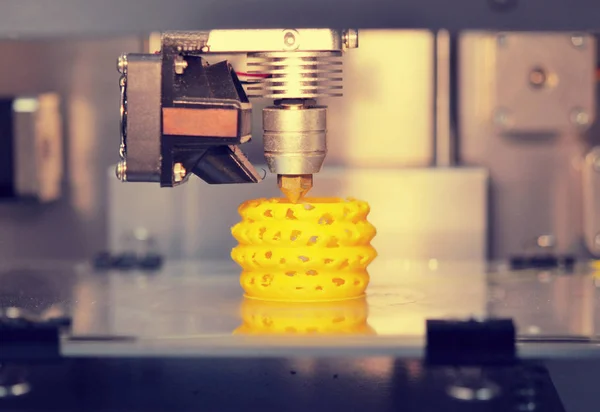 34.
34.
When creating the material, sources were used that are inaccessible to users from the Russian Federation. We hope you know what to do.
Our thoughts are based on an analysis of the company's business and the personal experience of our investors, but remember: it is not a fact that an investment idea will work as we expect. Everything we write is forecasts and hypotheses, not a call to action. Rely on our thoughts or not - it's up to you.
And what about the author's forecasts
Research, such as this and this, suggests that the accuracy of target price predictions is low. And this is normal: there are always too many surprises on the stock exchange and accurate forecasts are rarely realized. If the situation were reversed, then funds based on computer algorithms would show results better than people, but alas, they work worse.
Therefore, we do not try to build complex models. The profit forecast in the article is the author's expectations. We indicate this forecast for reference: as with the investment idea as a whole, readers decide for themselves whether to trust the author and focus on the forecast or not.
We love, appreciate,
Investment edition
How the company earns
DDD makes 3D printers and provides services in this area. You can see what the company's printers look like on its website, but for the most part, these are printers for the corporate sector.
According to the annual report, the company's revenue is divided into the following segments.
Goods - 61.2%. A variety of printers: for plastic, for metal, for ceramics, and so on. Specialized software for scanning, design and virtual simulations for the medical sector. The segment's gross margin is 31.6% of its revenue.
Services - 38.8%. Technical support and training services for the company's clients. Production services for the company's customers - from prototyping to more complex projects. Specialized services for the medical sector: surgical planning, printing devices and instruments, building anatomical models, and more. The segment's gross margin is 52. 7% of its revenue.
7% of its revenue.
The report lacks detail: it would be useful to know what types of printers the company has - ceramic or metal, how much revenue they generate, and what is the structure of revenue by customer type. We know that the company serves clients from almost every possible industry: everyone always needs to print something large.
Company revenue by country and region:
- The Americas - 50.25%. The US accounts for 49.47% of the company's total revenue.
- Europe, Middle East and Africa - 38.34%.
- Asia Pacific - 11.41%.
The company is unprofitable.
Revenue and profit for the last 12 months in billions of dollars, total margin as a percentage of revenue. Source: MacrotrendsArguments in favor of the company
Dropped. The company's shares have fallen in price by 41.57% since February of this year: from $55.35 to $32.34. The fall was quite strong and perhaps we can pick up stocks in anticipation of a rebound.
Something about a fast growing market. DDD's target market for 3D printing and related solutions and products is expected to increase from $15 billion in 2021 to $37.2 billion in 2026. More recently, DDD bought Volumetric Biotechnologies, a biomaterial printing company, perhaps from this, those who believe that soon the missing organs for transplantation can be mass-produced on printers will run into the DDD shares.
The company has not the largest capitalization - 4.05 billion dollars. It is possible that its shares will be easy to pump for retail investors because they read somewhere that "the sector is very promising."
Prose of the market. In general, the company has something to hope for without speculation. In the Proto Labs idea, we have already discussed the good prospects for companies related to R&D and small-scale production due to the expected increase in corporate sector investment around the world in the renewal of fixed assets. And 3D printing is needed primarily for creating prototypes and a small number of parts.
And 3D printing is needed primarily for creating prototypes and a small number of parts.
DDD could also benefit from Biden's infrastructure package, which is about to become a reality. This will stimulate the industry and contribute to the demand for DDD solutions: it will increase the wear and tear of the equipment of manufacturing companies and increase their need to invest in the business.
Life has become better. In the latest report, DDD showed progress: the unprofitability of its business is declining - and profit may not be far off. This can attract investors from among banks and funds into shares.
Can buy. DDD has 35 years of additive manufacturing experience with solutions for all industries, from dentistry and surgery to jewelry and high-tech manufacturing. Given all of the above, it may well be bought by some large industrial conglomerate.
What can get in the way
Expensive. The company has a P/S of about 6. 55 - which is not very low. And if we take into account the unprofitability of the company and the fact that its revenue has not been growing particularly actively in recent years, you can even decide that the company is expensive.
55 - which is not very low. And if we take into account the unprofitability of the company and the fact that its revenue has not been growing particularly actively in recent years, you can even decide that the company is expensive.
Unprofitable. The company has been on the market for a long time, but it has no profit. Loss will contribute to the volatility of these stocks. Yes, and there is always the possibility of bankruptcy, even taking into account the fact that DDD's accounting is quite accurate: it has enough money to close all urgent debts.
Not all at once. Waves of investor interest in 3D printing periodically give way to disappointment when it suddenly turns out that not every individual user can print their own house yet.
3D printing technology is still quite raw and needs significant improvement: there are problems with a large number of defects, temperature control. So DDD will remain in the position of such a risky startup for some time to come, the technology of which has not yet been fully mastered. This must be understood and accepted in order not to be surprised by the volatility of these stocks.
This must be understood and accepted in order not to be surprised by the volatility of these stocks.
Hot time sets its test. The company has production and assets around the world, and more than half of its sales are made outside the United States. This means that logistical problems, as well as an increase in the cost of labor and raw materials, will be reflected in its reporting. Well, the permanent threat of a new quarantine must also be taken into account: as the experience of 2020 showed, the DDD business does not respond well to a decrease in industrial activity in the world.
What is the result
Shares can be taken now at $32.34. And then there are three options:
- wait until shares are worth $39. I think we will reach this level in the next 14 months;
- wait until the stock is worth $50. Here, you may have to wait 4 years for 3D printing to become widespread;
- hold the stock for 15 years to see the company become IBM from the world of 3D printing.

Learn more


